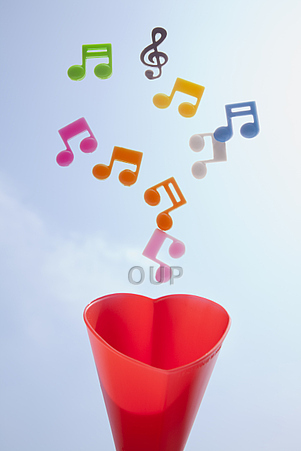
I have a confession to make: I forget to use music in my classroom. And then something happens that reminds me that using music to teach – not just to kids but to teenagers and adults, too – is one of the best ways to help them learn. It seems obvious, but I forget all the time. I use flashcards. I play games. I teach culture and history and I tell stories. But I forget to use music. Crazy, isn’t it?
Part of the problem is that I teach teenagers, between 12 and 16 years old. My eight students are children who live in one of the poorest areas of São Paulo, Brazil: Campo Limpo. They’re part of a special educational program that removed them from their overcrowded and undisciplined public schools and put them in a private school. I teach them once a week. Our classroom is in one of their homes, on a long table made of wooden planks set upon boxes, and the room’s one electrical outlet is on the other side of the room. The book we use, Oxford University Press’s Engage, is great. But Engage, like most books for teenagers, doesn’t come with a music program. As a result, I often forget how much these kids love music and how effective music can be.
I’m one of the authors of Everybody Up. This is a primary series which comes with an incredible music program and is entering the second year of its outstanding and award-winning Global Sing-Along. You wouldn’t think I’d need reminders to use music! But I do. Here’s a story for you.
Before the books were ready, I received a sample CD of some of the music. I had the CD in my car and was giving several of my teenage students a ride to school after our class. My students love Beyoncé and laugh at Justin Bieber (although they won’t let me change the radio station when he’s on), and one listens to Guns N’ Roses in preparation for his career as a rock star. Instead of turning on the radio, I decided to keep listening to my new CD. A song for the Starter level, Boys and Girls, came on. The music was obviously for very young children.
And my ‘too cool’ teenage students learned the words the first time, divided themselves into boys and girls and sang the song repeatedly. We drove through Campo Limpo with the windows down – past lines of laundry, small shacks and a large trash heap, through a park known for its drug dealers, over speed bumps and in front of the brick homes of one of their family members. ‘There’s my cousin,’ Camila laughed, and shouted, ‘Hi boy!’ out the window. The boy waved.
So, are we really too cool?
With these teenagers, I can use Everybody Up songs and they’re happy to learn them. They laugh. It’s kiddie music, but they always listen carefully, learn, and leave the class singing the song. I also like to use songs from the radio. We recently listened to Katy Perry’s Firework. It’s a song they know but never understood. They’re beginner students so I use a variety of techniques with songs, especially with complicated, non-ELT songs:
- I don’t expect them to learn the entire song. That can be difficult, requires a lot of L1, and is certainly hard to remember five minutes after class is over.
- I pick out a grammar point or a set of vocabulary. I pre-teach that language and give them the lyrics printed out with those parts missing. They listen, sometimes several times, to fill in the blanks with pre-taught material.
- We talk about the general message of the song and listen one more time.
- We talk about the cultural differences the song exposes. Elvis’s Blue Christmas surprised my students because something blue in Portuguese is happy. Thayza refused to believe me that ‘blue’ meant sad, but she’s beginning to accept the concept!
- If there’s time, they can do post-listening activities like inventing dance routines, researching the singer or the song, or finding other songs with similar lyrics or messages.
I’ve made a personal goal of using a song – any song – at least once a month. I’m learning that if a song meets a need, students, no matter their age, don’t care if it’s a song for children, for Elvis fans, or for future rock musicians. There’s always something to be learned, and music makes it stick.
What about you? What’s your experience with mixing music styles in the classroom?
Visit our site for more information on Everybody Up and the Everybody Up Global Sing-along 2013.